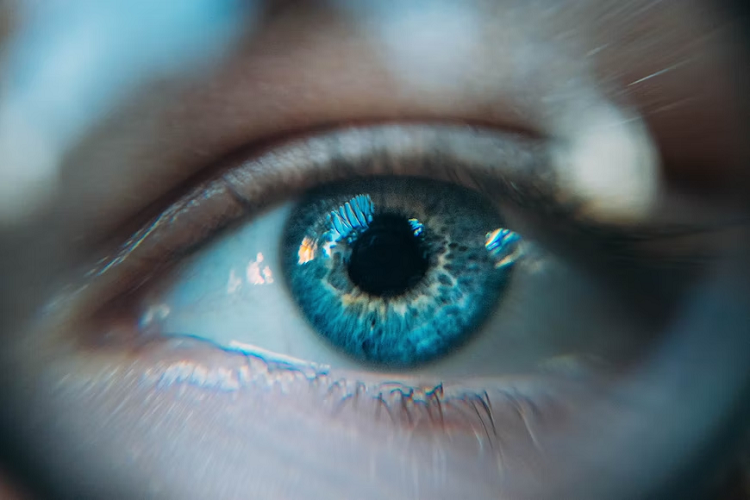Thyroid Eye Disease (TED) is a condition that patients with hypothyroid often get diagnosed with. Significant inflammation occurs in the muscles and fatty tissues behind the eye. The eyes start to bulge and the eyelids retract. This can cause double vision, difficulty closing the eyes and a dry, gritty sensation in the eyes.
TED is most commonly associated with Graves’ disease, an autoimmune disorder that affects the thyroid gland. Graves disease affects roughly 2 to 3% of any population, according to National Organization for Rare Diseases.
Thyroid Eye Disease (TED) Treatment
In this article, we explore some of the commonly practiced treatment methods for Thyroid Eye Disease. We have mentioned TED-specific medical interventions in this article. Certain lifestyle changes will need to be made to ensure Thyroid Eye Disease (TED) treatment methods work.
Medications
Some patients with Thyroid Eye Disease were prescribed Tepezza, a drug that was approved by the FDA in Jan 2020. It has been found in certain cases, patients taking Tepezza were diagnosed with tinnitus or hearing loss.
Some patients have faced partial or permanent hearing loss, whereas there are others afflicted with other hearing disorders like sensorineural hearing loss, increased sensitivity to sound, and Patulous Eustachian Tube Dysfunction.
If you or a loved one are facing hearing-related issues after using Tepezza, you may be eligible to sue the Manufacturer Horizon Therapeutics and may receive compensation. We suggest you browse reliable online resources on the Tepezza Lawsuit to educate yourself further on this issue.
Common medications for Thyroid Eye Disease include corticosteroids, which reduce inflammation and swelling in the affected tissues, and immunosuppressants, which can help to prevent the immune system from attacking the eye muscles and other tissues.
Other medications like anticoagulants and beta-blockers may also be used to manage symptoms like double vision and eyelid retraction.
Eye Drops
Eye drops may be used as a treatment for Thyroid Eye Disease, typically in conjunction with other medications. The specific type of eye drops used will depend on the symptoms being treated.
Some common examples of eye drops used include the ones mentioned below.
- Artificial tears may be used to lubricate dry eyes
- Decongestant drops may be used to reduce redness and inflammation of the conjunctiva.
- Steroid eye drops may also be used to decrease inflammation and swelling in the affected tissues. These drops reduce the risk of developing extraocular muscle restriction and improve vision.
- Immunosuppressive drops may be used to help prevent the immune system from attacking the eye muscles and other tissues.
It is important to note that the use of steroid eye drops should be closely monitored by an ophthalmologist, as prolonged use or high doses can lead to side effects such as glaucoma, cataract formation, and increased intraocular pressure.
Selenium Supplements
Selenium is a trace element that is essential for the proper function of the thyroid gland.
Thyroid conditions affect nearly 20 million Americans today, according to the American Thyroid Association. Thus, treating the root cause of the disease is essential to treating TED.
There is some evidence to suggest that supplementing thyroid medications with selenium may help to reduce the severity of TED symptoms and improve the outcome of the disease.
Selenium supplements may help to improve the function of the thyroid gland, which can help to reduce inflammation and swelling in the affected tissues. Additionally, selenium may have antioxidant properties that can help to protect the eye muscles and other tissues from damage caused by the disease.
Usage of Fresnel Prisms and Sunglasses
Fresnel prisms and sunglasses may be used as a treatment option for specific symptoms of Thyroid Eye Disease (TED).
Fresnel prisms are thin, lightweight prisms that can be placed in glasses or contact lenses to help correct double vision caused by TED. They work by bending light to realign the images seen by the affected eye and reduce double vision. They are particularly useful for patients with TED-associated muscle weakness or restriction that causes misalignment of the eyes.
Sunglasses can also be helpful for patients with TED, as the disease can cause increased sensitivity to light. This can cause discomfort, pain, and even further vision problems. The sunglasses can help to reduce the amount of light entering the eye, which can help to alleviate these symptoms.
Surgery
Surgery can be a useful treatment option for some patients with Thyroid Eye Disorder (TED) to correct specific problems caused by the disease. Different surgical procedures may be used depending on the symptoms and severity of the condition.
Eyelid Surgery
One of the most common surgical procedures used to treat TED is eyelid surgery, which can help to correct problems such as eyelid retraction or eyelid lag.
This can be done by repositioning the eyelid or by removing excess tissue. Eyelid surgery is a fairly common plastic surgery procedure and gets performed for over 100,000 people in the United States annually, according to Johns Hopkins Medicine Institute.
Orbital Decompression Surgery
This surgical method reduces the pressure within the eye socket caused by TED, which can alleviate symptoms such as proptosis, double vision, and eye pain.
This is done by removing some of the bone from the eye socket to create more space for the eye and surrounding structures.
Rectus Muscle Surgery
This surgical procedure repositions the muscles that control eye movement and can help to improve double vision caused by muscle weakness or restriction.
Surgery can also help to improve the appearance of the eyes and face if the patient has significant bulging of the eyes. This can be done by removing excess fat and tissue, and by repositioning the muscles and eyelids.
Treatment for Thyroid Eye Disease (TED) typically involves a combination of medications, lifestyle changes, and in some cases, surgery. It is important to consult with a specialist in the field, such as an ophthalmologist, endocrinologist, or plastic surgeon, to develop a personalized treatment plan that addresses the specific symptoms and underlying causes of the disease. It is also important to note that treatment for TED requires close monitoring and may need adjustments over time.




